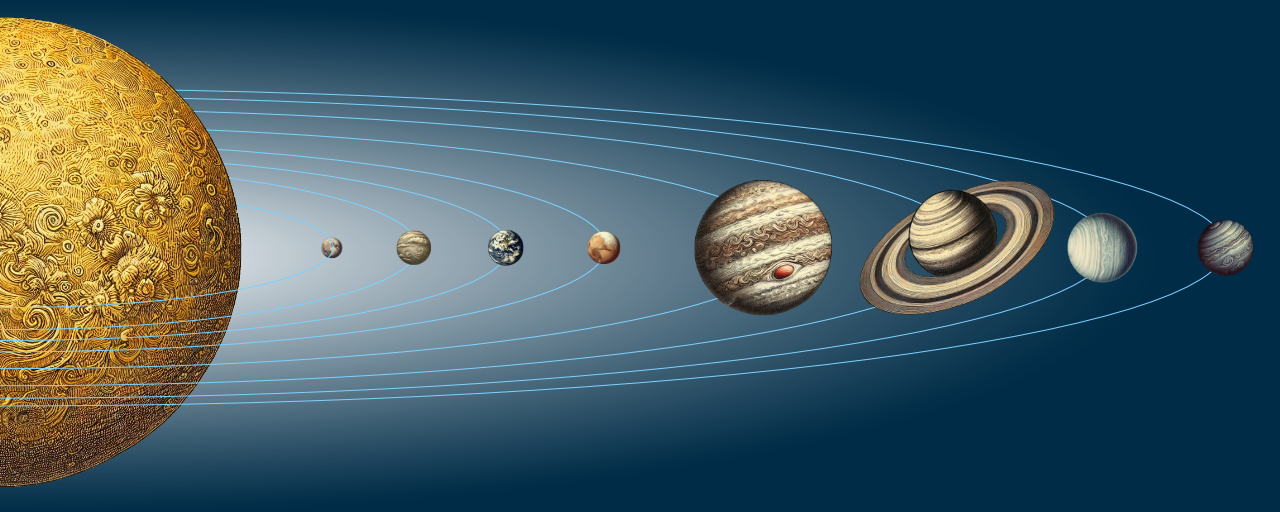| 2025 Jan 16-27: Six Planet Challenge (2024-12-20) ⬅︎ |
 |
Question: of the planets in our Solar System besides Earth, how many are typically visible on a clear night?
Answer: If you said, two or three, then you’re right.
That’s why January of 2025 offers a very cool challenge for stargazers: it will be possible to view six planets at the same time. If you are interested in adding this rare feat to your list of stargazing accomplishments, then read on…
The six planets include Venus, Mars, Jupiter, Saturn, Uranus and Neptune. What will make viewing all six so challenging is that they vary greatly in brightness from super bright to extremely dim. Here’s a chart to explain things:
| Planet |
Brightness (Magnitude) |
Compared to Venus |
Viewing |
| Venus |
-4.5 |
|
Super easy to find naked-eye |
| Jupiter |
-2.6 |
6x dimmer |
Super easy to find naked-eye |
| Mars |
-1.3 |
19x dimmer |
Easy to find naked-eye if you know where to look |
| Saturn |
+1.1 |
174x dimmer |
Easy to find naked-eye if you know where to look |
| Uranus |
+5.7 |
12,000x dimmer |
Binocular or telescope usually required |
| Neptune |
+7.9 |
90,000x dimmer |
Binocular or telescope always required |
January 16 - 27
| When | January 15 - 27, 6-7pm |
| Venus | Look in the SW sky. Venus is the brightest of all planets and is an easy find. While eyes are enough, a telescope can reveal its phase. Just like our Moon, Venus also goes through phases.
|
| Jupiter | Look high in the SE. Jupiter is the 2nd brightest of all planets. While eyes are enough, a binocular can reveal its four largest moons and a telescope can reveal the moons, banding, and the Great Red Spot when conditions allow.
|
| Mars | Look for moderately bright Mars east of Jupiter.
Mars is easy to find naked-eye because of its bright orange-red color. But don’t confuse it with Betelgeuse in Orion. Your eyes are enough but a binocular will enlarge its disk while a telescope can reveal polar icecaps and volcanoes when conditions allow.
|
| Saturn | Look for a moderately bright object just below Venus. Although Saturn is similar in brightness to Mars, its color is a yellow-beige. It is easy to find naked-eye but a binocular can reveal that it is not round while a telescope can reveal its magnificent rings, bands and some moons when conditions allow.
|
| Uranus | This elusive world is the most distant naked-eye planet. Ancient stargazers never realized it was a planet because it moves so very slowly. Unless you are viewing from a very dark location, you'll need a binocular or telescope. Use this link for help in finding Uranus: Finding Uranus in 2025 |
| Neptune | Neptune is the only planet that cannot be seen naked-eye -- it requires optical aid like a binocular or telescope. Use this link for help in finding Neptune: Finding Neptune in 2025 |
You’ll need a good viewing location with dark skies and a view of the ecliptic — the arc that stretches across our sky from east to west and forms the path of the planets in our sky. For more info, see Brightness and Ecliptic.
Wishing you good luck and clear skies!
|
| |



